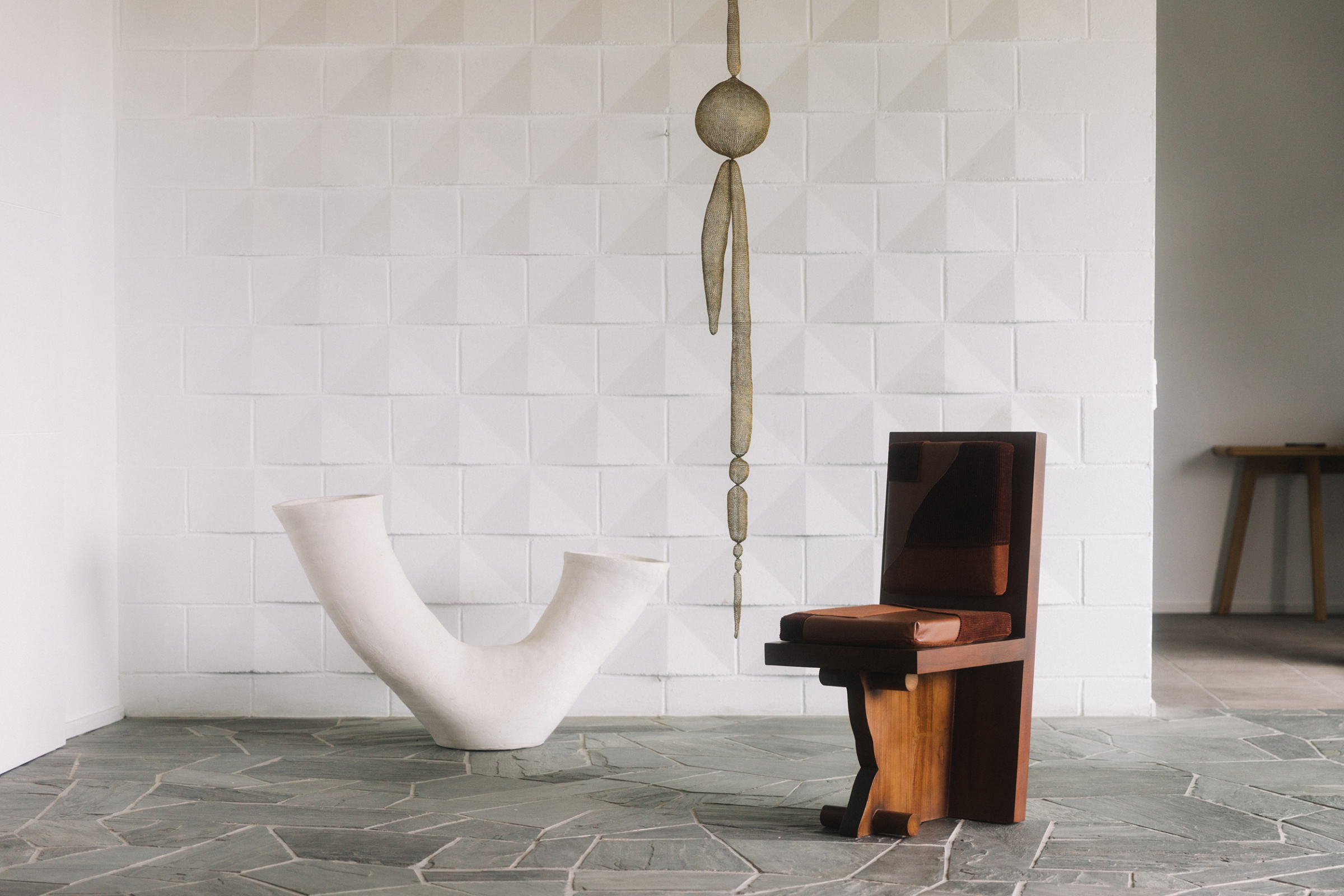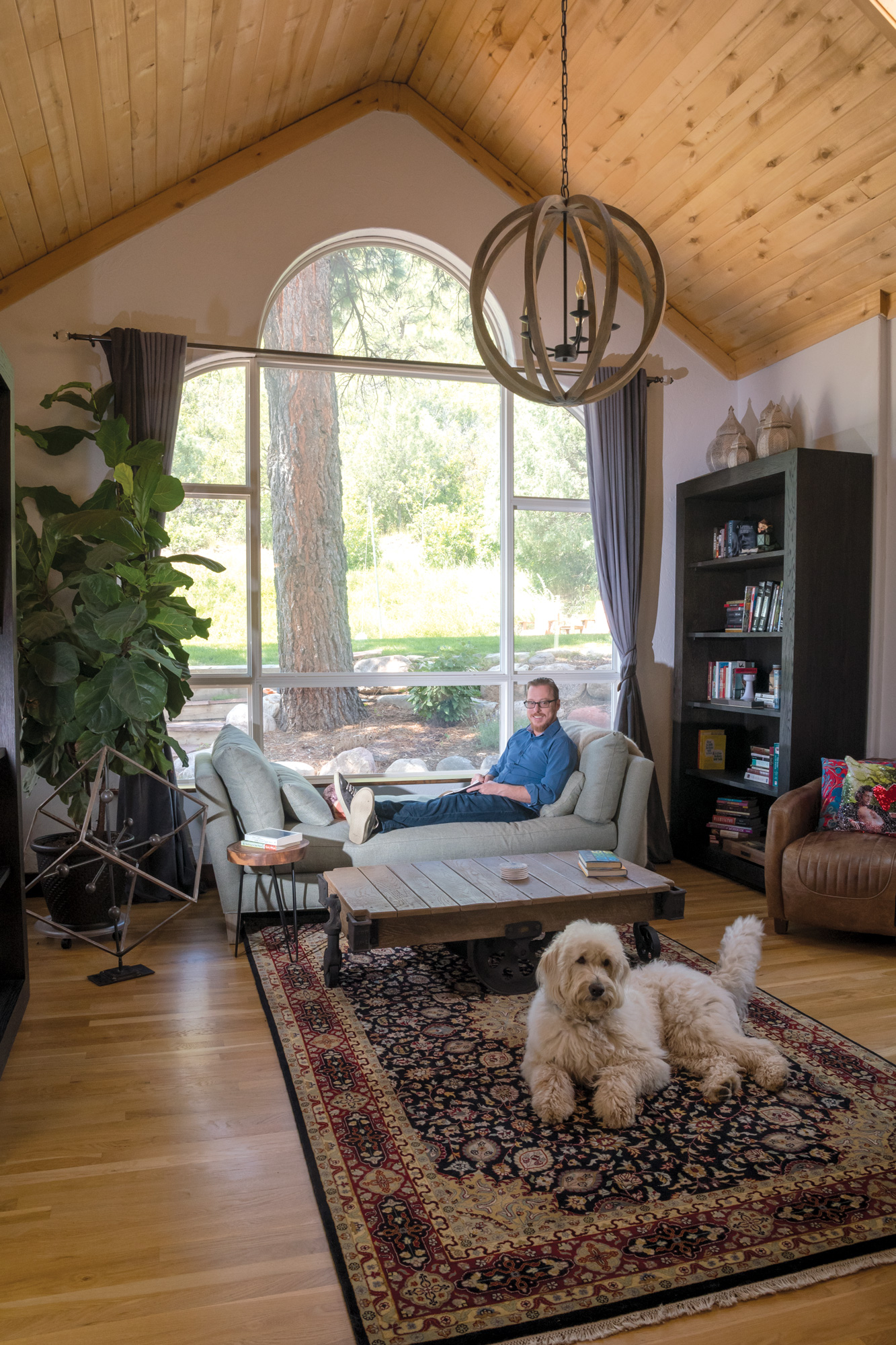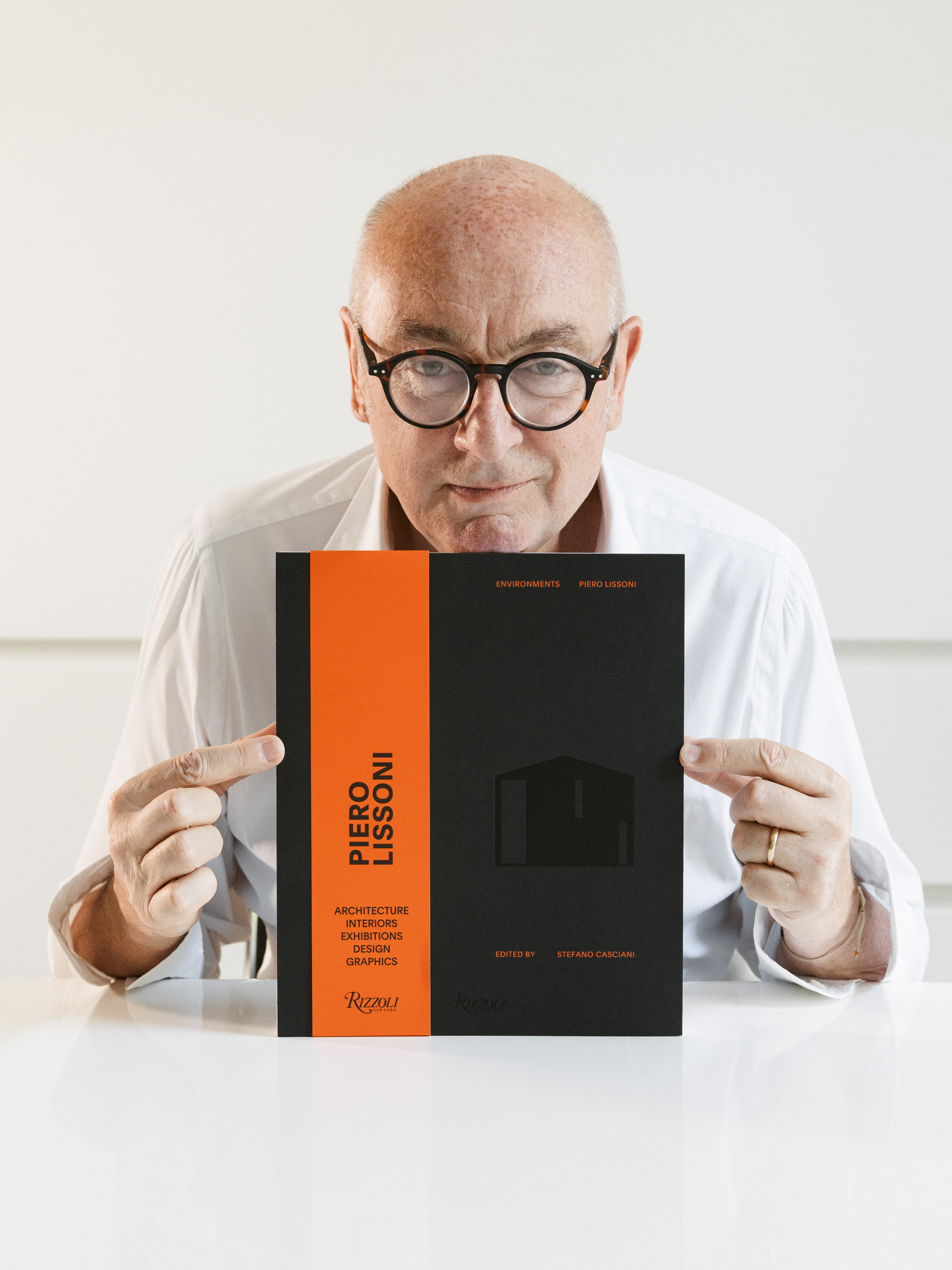Your articles in the International Herald Tribune are pretty much what we hold as the standard here at our young publication: smart, educated dialogue on design, that is also accessible to people who are not specifically designers, but interested in the topic. Do you write with this in mind?
I write for a general readership, and that makes a huge difference. If I were writing for a design publication, I’d write completely differently. The themes might not be dramatically different, but the way I approached them and my style of writing would be. If you’re writing for the mainstream media, you have to be very clear in your writing, and can never resort to code or jargon. Sometimes it’s frustrating because you risk sacrificing subtlety for clarity, and it can become boring to always have to spell everything out, but that’s part of the challenge.
Like lots of design nuts, I find it deeply irritating that public perceptions of design should be dominated by a handful of badly designed, over-priced pieces of furniture.
You have said that you’re not interested in writing about ‘expensive, uncomfortable chairs.’ Has that always been the case, or have you evolved into this place over time in your career?
Although I do write about them from time to time, I think there are many richer, more complex and dynamic areas of design. There are, of course, lots of chairs, expensive and otherwise, that are also technologically innovative, beautiful, sustainable and comfortable. And no one could deny the chair’s importance in 20th century design history. But, like lots of design nuts, I find it deeply irritating that public perceptions of design should be dominated by a handful of badly designed, over-priced pieces of furniture. Though, hopefully, that will change over time as public understanding of design becomes more knowledgeable and nuanced.
What do you think about the current state of design criticism?
The current condition of design criticism is quite healthy, largely thanks to the blogs. If you look back historically, great design magazines have surfaced over the years to champion new design movements and generate debate. Some of my personal favorites are Typographica, the 1960s British graphics magazine, and Domus in Italy, first under Ponti’s editorship in the 1930s.
But blogging has democratized design criticism by enabling so many more designers and design commentators to share their views. Among the American blogs, I always enjoyDesign Observer and Change Observer, and it’s great to follow new developments on Core77, Inhabitat and Worldchanging. Collectively, the blogs have created a more open, dynamic and intellectually engaged debate.
What do you think about the lack of American design critics in large publications?
This isn’t just an American phenomenon, it’s an international problem, which I hope will be redressed over time. I realize that I am very lucky to work for a paper like the International Herald Tribune, which has a large and influential international readership, and senior editors who have given me complete freedom to write about design as I see it. Also, as I’m the IHT’s first design critic, I’ve been able to define the role as I wished, which has been fantastic.
It would be great to think that other papers will follow the IHT’s example. Thankfully the column has been very successful. We’ve had a fantastic response from readers and, on the commercial front, from advertisers. The IHT also syndicates the column to lots of other newspapers and magazines internationally. That said, it is expensive for theIHT to resource, not least because I have to travel widely to research it. And the economic pressure on the news media is now so severe that it is very difficult for major publications to consider expanding into design or any other area.
That said, as I’ve mentioned, the blogs have livened up design criticism considerably. Another encouraging sign is that art critics are increasingly writing about design, as are commentators from other fields. Some of my favorite design pieces of the last year or so appeared in Artforum (where Sean Keller’s essays have been fantastic), The New Yorker and New York Review of Books.
The designer’s role is the polar opposite to the 20th century cliché of the creative-control-freak-cum-design-hero.
You said in your story “Engineering a Brighter Future” about social designers: “Rather than using design to produce visible things, such as objects or images, social designers apply the principles of design thinking to address social, political and humanitarian crises. They also use their instinctive flair for identifying the causes of problems and inventing ingenious ways of solving them, as well as their ability to “sell” those solutions clearly and persuasively.”
From this standpoint, would you say that social design is becoming more inclusive from a consumer forum, with people outside of design getting involved, and less behind-closed-doors and trade-exclusive?
Inclusivity is one of the most important elements in any social design project, both in terms of forging cross-disciplinary collaborations between designers and, say, anthropologists, economists, ethnographers and social scientists, and of involving the “audience” in the design process. The designer’s role is the polar opposite to the 20th century cliché of the creative-control-freak-cum-design-hero.
You can see this in the work of one of the most exciting social design groups, Participle, which is based here in London. Participle was founded three years ago, but has already developed alternative ways of caring for the elderly and empowering young people. In both projects, the development process was led by designers, working with specialists from other disciplines and the target audience, all of who followed a design process and used design language.
Both projects have been extremely successful by replacing a dysfunctional service with a more efficient and inspiring one at no extra cost, which is critical at a time of recession. That said, neither has been labeled as an example of “social design,” the audience simply sees them as improved public services.
To this point, where is the most interesting/relevant discussion on design taking place, in your opinion?
One of the most interesting design books I’ve read recently is Uncorporate Identity by the Dutch design research group, Metahaven, which explores a cynical, subversive, almost dystopian vision of design.
There are also exciting developments in design schools, some of which have become increasingly experimental in recent years, especially in the United States. MIT Media Lab is an obvious example, but it’s also fascinating to follow the development of the d.school at Stanford and John Maeda’s progress at RISD. The equivalent here in Europe is, of course, Design Academy Eindhoven in the Netherlands, which is fantastic.
Then there are the humanitarian design networks, which are becoming increasingly influential. Both Architecture for Humanity and Project H Design have made a big impact, especially in the United States, as has INDEX:, the Danish humanitarian design initiative, internationally.
It has also been great to see how effective museums and contemporary art spaces have been in generating debate on design. A stellar example is Design and the Elastic Mind, the 2008 show curated by Paola Antonelli at MoMA, New York on the intersection of design, technology and science. It was a fantastic exhibition, which, I’m sure, will be discussed for decades to come. Paola did an amazing job at using every element of the curatorial process to provoke discussion —hosting regular “salons” with scientists, designers and programmers to air the issues during the research phase; commissioning Yugo Nakamura to design a great Web site; and Irma Boom to produce a beautiful catalogue. All of this ensured that the debate extended beyond the exhibition itself.
Another exciting development is the emergence of design on the programs of independent art spaces, like Z33 at Hasselt in Belgium. Z33 has staged a series of exhibitions that have nailed new directions in design, such as Critical Design, the 2007 show, which explored the development of the new wave of conceptual designers, who treat design as an analytical and expressive medium to comment on design and consumer culture, as artists have often done.
What would you say are some of the most impactful, yet simple creations you’ve seen? And who would you say is an innovative social designer or design collaborative out there today?
An intriguing one is the Mahlangu, a portable hand-washing device developed by Irene Van Peer, a Dutch designer who worked in the South African townships. One of the biggest problems there is the spread of infectious diseases. The best way of preventing this is, of course, to wash your hands, but water is so scarce in the townships that hand washing is prohibitively difficult. Irene devised a low-to-no-cost solution by converting an empty plastic bottle into a water squirter. She did this by making a nozzle to attach to the top of the bottle from materials that people could find easily in the townships, including a pebble as a stopper. Each bottle would provide enough water for 40 hand washes, but would be light enough to be carried around all day. Rather than manufacture them herself, she built a few devices and taught people in the townships how to make them. They then told other people, so her design formula spread by word of mouth. Not only had she designed an ingenious—and very useful—product, she had come up with an equally ingenious means of distributing it.
Are there any designers we should be on the lookout for?
So many in so many different fields. One of the things I love about design is it’s so dynamic, constantly changing to address new needs and to solve new problems. A great example is the development of data visualization, the new visual language that translates digital information into a form that we can understand, one that evolves as the information changes. American designers are at the forefront led by Ben Fry and Casey Reas, who developed Processing, the programming language that has helped thousands of other designers to create data visualizations. It has been incredibly exciting to watch that happen, just as it will be to follow its future progress.
Where do you find the things you review when compiling lists of favorites?
I’m constantly looking out for interesting things to write about. I read as much as I can online and offline, travel widely and talk to as many people as possible. I spotted the theme of one column while cycling along Oxford Street, the main shopping street in London, when I noticed the logo of Ann Summers, the biggest chain of sex shops in Britain. It was a bitten apple, just like [technology company]Apple’s, but completely different in style. That gave me the idea of comparing the two logos to see why they could be typologically identical yet convey such different messages.
Though many of my most popular columns aren’t on good design, but bad design. Why are cars so badly designed? Why are cell phones dysfunctional? Why are so many products over-complicated? Sadly there’s no shortage of “bad design” themes.
You mention in your article “Breaking Loose from the Sober side” that some of the most important issues in design right now are idealistic, serious and public spirited. Cracking the environmental crisis. Wrestling with social problems. Tackling humanitarian issues. Turning scientific discoveries and technological advances to our advantage. Now, granted the article goes on to discuss the more lavish inventions in design, I’d like to know if you find that your former point – about the ‘idealistic’ and ‘serious’ side of design – has anything to do with current events, and the political and economic landscapes?
Oh absolutely. We’re living in such a dark, turbulent, dangerous era—almost dystopian. Economic recession. Environmental crisis. Social dissent. Geopolitical chaos. That’s just for starters. Designers have such a constructive contribution to make at a time when other disciplines, like the social sciences, are acutely aware of the need to find new approaches to the problems in their fields, because their 20th century way of working is no longer fit for purpose. Design is all about solving problems and helping us to make sense of change in a user-friendly way.
Where did you find the information about Charles Booth and his mapping system for your piece “An Early Triumph in Information Design”? You mention in that piece that as the data crisis worsens, finding new ways to make sense of this infinitely increasing amount of information, and the need to illustrate it clearly becomes ever more urgent. Why do you think the need to illustrate this becomes more urgent? And why do you think data visualization is necessary?
Years ago, a boyfriend gave me a reproduction of Booth’s first Poverty Map of the area of East London where I live. I’ve been interested in Booth’s work ever since. He was a wealthy philanthropist who sent teams of volunteers to walk around different areas of London in the late 1800s assessing the poverty (or otherwise) of each street, and then depicted their findings on a map through color-coding. They discovered that the authorities had significantly underestimated the scale of poverty. As soon as I had an excuse to write about it — the original maps went on display at the Museum of London recently—I did so. If you’re writing about a historic subject, it’s always helpful to draw parallels with contemporary life. It makes the theme seem more relevant and engaging to the reader. Data overload is a huge problem today and it’s worsening. As processing power rockets, computers are bombarding us with information at greater speed and scale than ever before. Data visualization is a solution, and a great example of design producing an intelligent and inspiring solution to a serious problem.
What do you think is the most iconic design item—whether object or print—out of London?
London has a great design heritage and we’re lucky in that some of the most visible symbols of the city are also fantastic examples of design. One of my favorites is the London Underground Map. It was designed in the early 1930s by Harry Beck, a junior draughtsman at London Transport. London was expanding so rapidly into the suburbs that the old geographic map was cluttered and confusing, especially for people straining to see it across crowded platforms. Beck’s inspiration was to create a diagrammatic map based on the electrical circuit, which wasn’t geographically accurate but was much, much easier to understand. It’s a brilliant example of information design.
What’s your favorite Yves Saint Laurent item?
Well, the thing I admire most about Saint Laurent is his eclecticism. If you think of other great fashion designers, they excelled at a particular style or technique. Chanel at soft tailoring. Vionnet for the bias cut. Balenciaga for sculpted tailoring and so on. Saint Laurent could do everything. Tailoring. Flou. Historicism. Pop. Decoration. He was so original and innovative, a master of every technique and style. It’s impossible to think of another designer having the same impact as he did with, say, the 1971 camp collection, which was inspired by his memories of his mother in the 1940s and the drag queens he’d met with Andy Warhol in New York. At the time it was wildly controversial because it broke so many taboos, but it defined the glam look that dominated fashion and pop culture throughout the 1970s.
Do you have a favorite fashion designer?
Looking back historically, I have favorites from different eras. Vionnet in the 1930s. Balenciaga in the 1950s. Saint Laurent in the 1960s and early 1970s Comme des Garçons in the 1980s. The 1990s would be a toss-up between Margiela and Helmut Lang. More recently, I love what Nicolas Ghesquière has done at Balenciaga, Pierre Hardy with shoes and Miuccia Prada is incredibly inventive. Among American designers, I like Alexander Wang for sporty stuff.
Text by Kristin Lamprecht
Photos by Chris Moore
(A version of this post originally appeared in Design Bureau (2010). Published with permission.)




